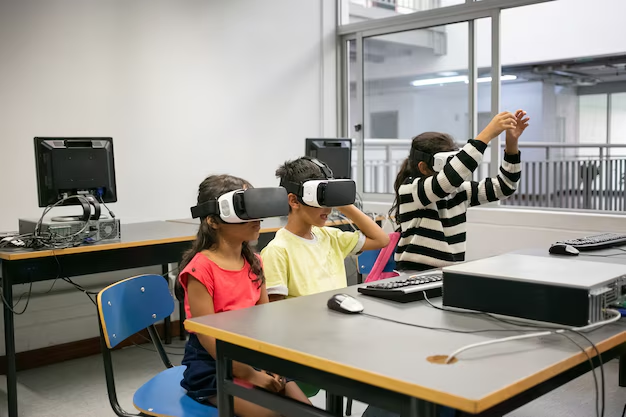
Introduction
- Brief overview of the role of technology in education.
- Importance of adapting teaching methods to include technology.
- Preview of topics covered in the post.
1. The Evolution of Technology in Education
- Historical perspective on technology use in classrooms.
- Major technological advancements (computers, the internet, mobile devices).
- Current trends in educational technology (AI, VR, gamification).
2. Benefits of Technology in the Classroom
- Enhanced student engagement and motivation.
- Improved access to resources and information.
- Opportunities for personalized learning.
- Facilitation of collaboration and communication.
3. Best Practices for Integrating Technology
3.1 Assessing Needs and Resources
- Evaluating the technological needs of students and teachers.
- Analyzing available resources (hardware, software, internet access).
3.2 Selecting Appropriate Tools
- Overview of various educational technology tools (learning management systems, interactive apps).
- Criteria for choosing the right tools for specific learning objectives.
3.3 Designing Technology-Infused Lessons
- Strategies for integrating technology into lesson plans.
- Examples of technology-enhanced activities (flipped classrooms, blended learning).
4. Fostering Digital Citizenship
- Importance of teaching responsible technology use.
- Strategies for promoting digital literacy and online safety.
- Engaging students in discussions about ethics and behavior online.
5. Overcoming Challenges in Technology Integration
- Common obstacles (lack of training, resistance to change).
- Solutions and support systems (professional development, peer collaboration).
6. Case Studies and Success Stories
- Examples of schools or educators successfully using technology in their teaching.
- Analysis of outcomes and student feedback.
7. Future Trends in Educational Technology
- Predictions for the next decade (AI, personalized learning environments).
- How teachers can prepare for emerging technologies.
Conclusion
In today’s rapidly evolving educational landscape, incorporating technology into teaching is not just a trend—it’s a necessity. As we’ve explored, the benefits of using technology in the classroom are numerous, from enhancing student engagement to enabling personalized learning experiences. By selecting the right tools and designing technology-infused lessons, educators can create dynamic and interactive learning environments that cater to the diverse needs of their students.
However, successfully integrating technology goes beyond merely using gadgets and software; it requires fostering digital citizenship, overcoming challenges, and continually adapting to new advancements. Educators play a crucial role in guiding students through this digital age, ensuring they not only consume technology but also navigate it responsibly and ethically.
As we look to the future, emerging trends such as artificial intelligence and personalized learning environments promise even more opportunities for innovation in education. By staying informed and adaptable, teachers can harness these developments to further enrich their teaching practices.
In conclusion, the journey toward effectively incorporating technology in education is ongoing. It demands creativity, collaboration, and a commitment to lifelong learning from educators. By embracing these best practices, we can empower our students to thrive in a digital world, equipping them with the skills they need for success both inside and outside the classroom. Let’s continue the conversation—share your experiences and insights on using technology in education, and together we can shape the future of learning.
